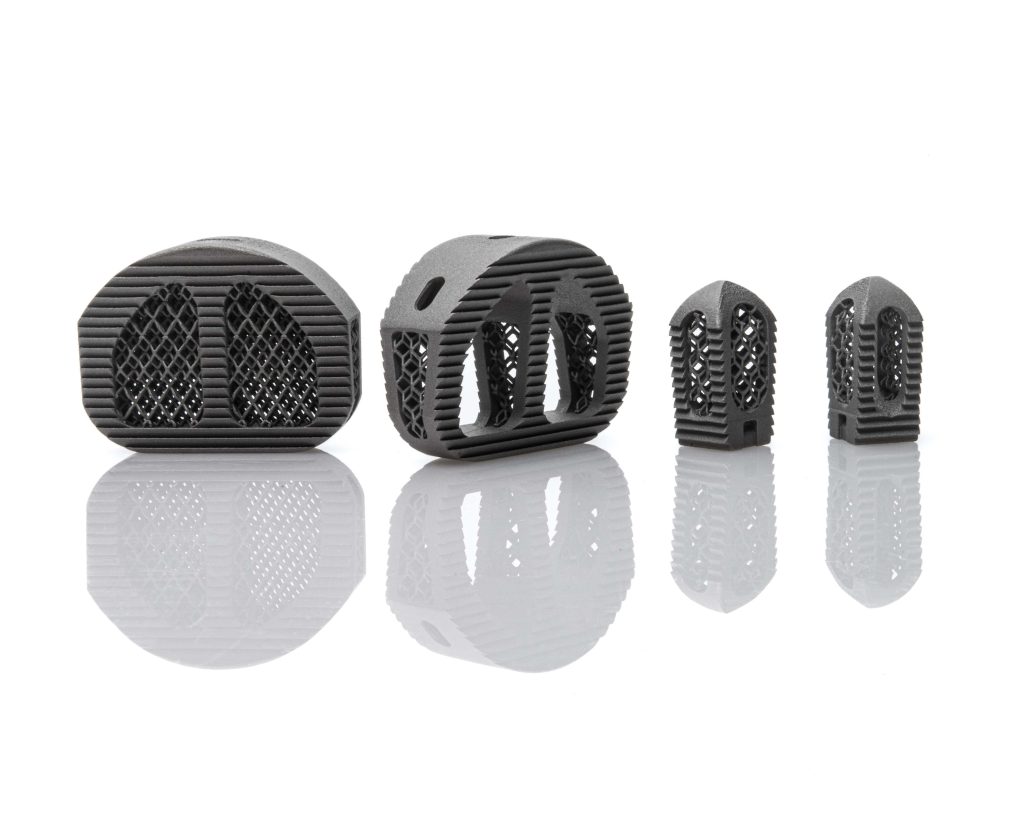Amnovis, an additive manufacturing production and engineering company based in Belgium, has produced a United States Food and Drug Administration (FDA) Master File.
An ISO 13485 certified contract manufacturer, Amnovis’ FDA Master File features key information on all aspects of its qualified titanium 3D printing processes for Ti grade 1 and Ti-6Al-4V grade 23.
The company claims that this addresses FDA concerns regarding titanium 3D printing processes. According to Amnovis, this Master File will simplify the regulatory submissions of 3D printed titanium implants in the USA for medical OEM’s worldwide, enabling faster time-to-market.
“Having an FDA Master File is a new milestone for our company and perfectly fits with our strategy of manufacturing high-end products for quality-critical and high-tech applications,” commented Amnovis CEO & Co-founder Ruben Wauthle. “Guided by our commitment to quality, we are ISO 13485 certified and combine our thorough understanding of product specifications and process capabilities with state-of-the-art metrology and material testing methods.”
“As a result, we enable our customers to shorten their time-to-market and to eliminate costs related to non-conforming parts,” added Wauthle.

Amnovis’ medical 3D printing expertise
One of the first companies to use laser powder bed fusion (LPBF) to 3D print titanium medical devices, Amnovis has been employing additive manufacturing to produce high-end medical devices since 2008.
Just last year, the company was selected by medical device firm CairnSurgical to 3D print its patient-specific Breast Cancer Locator (BCL). This surgical guide device was designed to help surgeons precisely locate and remove breast tumors during lumpectomies. Available for commercial use in the EU, Amnovis 3D prints these devices using Stereolithography (SLA) 3D printing technology.
Similarly, Amnovis has also collaborated with medical device service provider BAAT Medical to develop a novel and efficient process for 3D printed medical devices. The two companies combined their expertise to develop a process spanning initial design stages to manufacturing and validating end-use devices. Much like Amnovis’ FDA Master File, this process is said to enable medical device start-ups and OEMs to achieve faster time-to-market and deliver improved patient outcomes.
Manufacturing on Demand

Amnovis’ FDA Master File
A common hurdle for medical device OEMs is addressing FDA concerns surrounding the 3D printing process as part of their regulatory submissions of medical devices. To mitigate potential delays and issues related to approvals for the US medical device market, Amnovis’ FDA Master File includes much of its titanium 3D printing experience and expertise.
The company claims that these expertise can help to remove the hurdles in medical device development, validation and manufacturing. Indeed, the Master File covers key aspects of Amnovis’ 3D printing processes for standards and patient-specific devices using validated Ti grade 1 and Ti-6Al-4V grade 23 materials. Thus, the Master File is said to simplify the regulatory submission for 3D printed titanium implants for Amnovis’ customers.
“As a company, we continuously want to redefine the state-of-the-art for 3D printed medical devices, and at the same time make our unique process knowhow and expertise more readily available to customers worldwide, like we do with our FDA Master File,” explained Wauthle. “In the end, this helps the adoption of 3D printed medical devices, which offer more added value for patients and provide them higher degrees of comfort and mobility.”

3D printed medical devices
Securing FDA approval is a key stage in the production and commercialization of 3D printed medical devices. Last year, UK-based medical 3D printing specialist 3D LifePrints received FDA clearance for its EmbedMed personalized surgery platform.
EmbedMed digitizes the surgical planning process, allowing for rapid design. The platform also assists in the additive manufacturing of patient-specific medical devices. Achieving FDA 510(k) clearance ultimately allows the company to demonstrate that its device is both safe and effective for wider public use.
“This clearance is the first step in executing 3D LifePrints’ strategy to bring Personalized Surgery to the US,” said Scott Parazynski, 3D LifePrints US Strategy Director.
Elsewhere, Ricoh USA also received 510(k) clearance from the FDA for its Ricoh 3D for Healthcare workflow. This workflow was cleared for craniomaxillofacial and orthopedic patient-specific anatomic modeling. Ricoh views this as a major step in providing widespread access to patient-specific 3D models for healthcare providers.
You might also like:
BiologIC Technologies receives Innovate UK funding to accelerate cheaper drug and vaccine development with 3D printed ‘lab-on-a-chip’: Analysis for Innovators (A4I), a grant funding programme run by Innovate UK, has enabled BiologIC to access the expertise and specialist equipment of the National Measurement Laboratory (NML). Thanks to this funding, the cambridge-based company has reportedly made a huge leap in its understanding of how the plastics in its 3D printed chips interact with biological applications.
* This article is reprinted from 3D Printing Industry. If you are involved in infringement, please contact us to delete it.
Author: Alex Tyrer-Jones

Leave A Comment